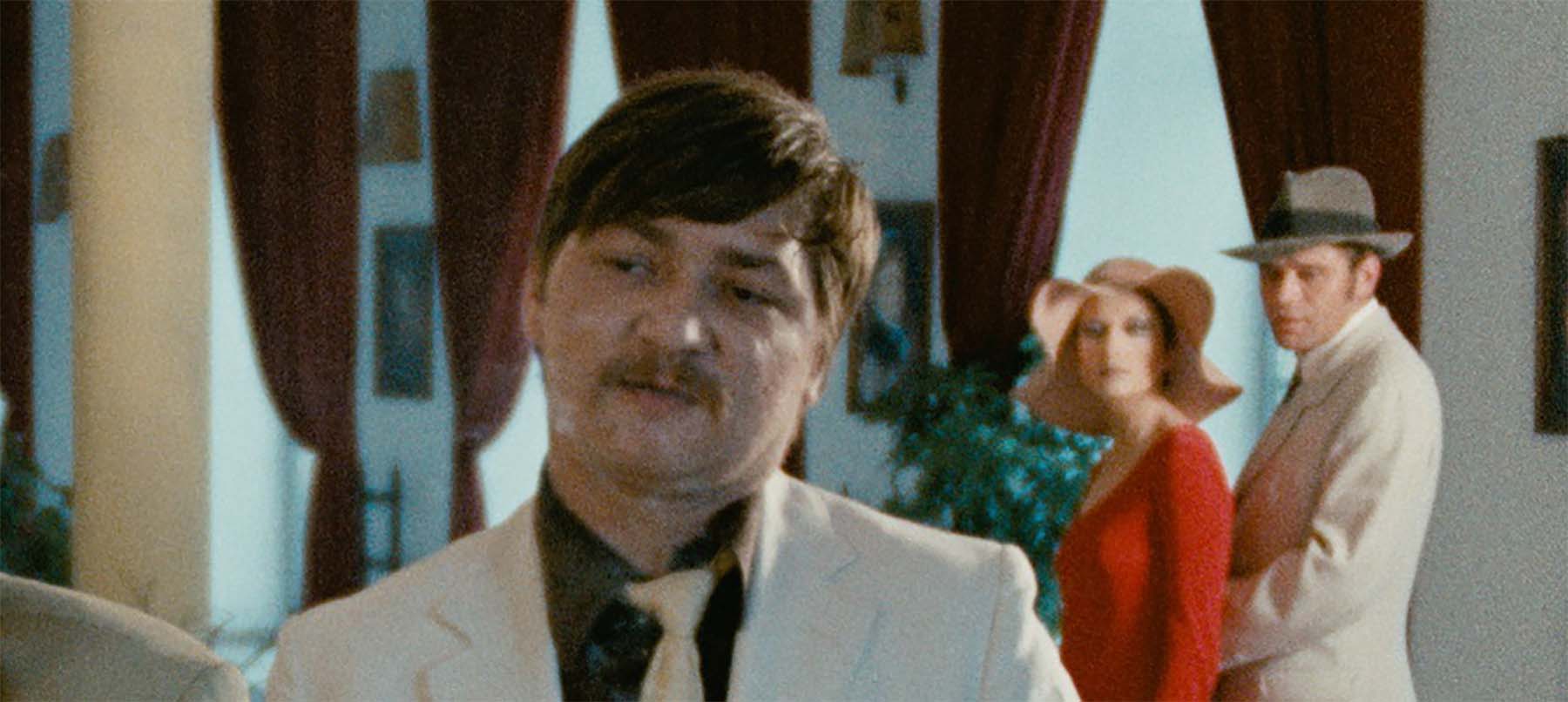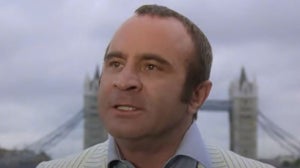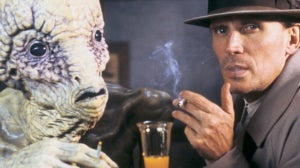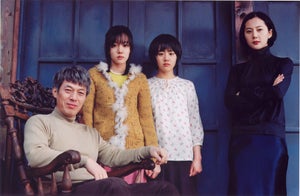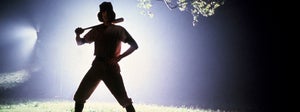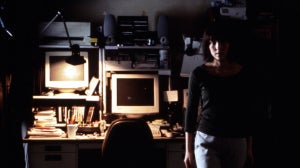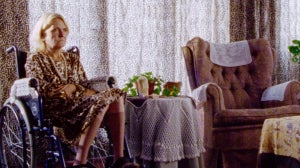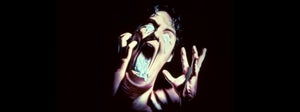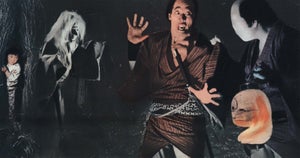
If you’re an Arrow collector, there’s a good chance you’re already aware of the name ‘Rainer Werner Fassbinder.’ The German genius has been well-represented on the label, with many of his greatest movies finding fresh audiences through Arrow’s gorgeous individual Blus.
But, if you’re reading this article, there’s a good chance your knowledge of the legendary auteur stops there. Perhaps you’ve been intimidated by the sheer number of projects Fassbinder churned out in his short life, and don’t know where to begin. Perhaps you’ve been put off by his reputation as an intense (and cruel) provocateur.
There’s even a chance you’ve heard his movies are hard to watch (some of them are, but you’d be surprised by how entertaining, and modern, much of his work feels).
So, as someone who worships at the Church of Fassbinder, I’m here to take you by the hand, and lead you to the altar of Fassbinder’s life, career, and incredible back catalogue.
Because, if you’re an Arrow collector, you’re a passionate film fan, and Rainer Werner Fassbinder is responsible for some of the greatest movies ever made. We’d hate for you to miss out, especially as there’s a couple of truly essential box sets on the way from Arrow Video.

Early Life
But let’s start at the end of the story. When Fassbinder died young on June 10, 1982 - aged just 37 - he left a legacy of work that included forty-four feature films and twenty-five stage plays (that he directed, or co-directed). That’s a truly astonishing body of work for a career that lasted just sixteen years. It would be impressive for a career double the length.
Fassbinder was driven by a fierce work ethic that only allowed him to feel functional when he was creating art. Perhaps unsurprisingly, he also wrestled with significant demons, conjured during a difficult childhood.
Friends and critics have theorised Fassbinder’s work was both a violent reaction to his traumatic upbringing, as well as an unconscious continuation of it. It’s probably not a coincidence that he cast his mother, Lilo Pempeit, in a series of unflattering roles over the course of his career. It’s equally understandable that so much of his work focuses on exploring pain.
Physically abandoned by his parents as a baby (sent to live with an uncle, in the hope of avoiding a life of poverty), before being brought back into the family, only to be emotionally shunned by his now-distant mother and father, Fassbinder’s earliest years were routed in rejection. Pempeit was frequently hospitalised after contracting tuberculosis, which led to further separation.
After a difficult divorce, Fassbinder found solace in a local cinema, where single mum Pempeit stuck him when she was working. As a child, he could watch three or four movies a day. It was an early creative influx that may have helped enable Fassbinder to churn out a high number of his own films in such a short period of time.
Another possible creative source came from his home environment - Fassbinder’s mother took on tenants to help make ends meet, who would often look after Rainer when she was otherwise engaged. This meant that Fassbinder grew up in an ever-changing environment, forging the kind of extremely close - but ultimately short-lived - relationships that are developed on a traditional film set.
However, a Fassbinder film set couldn’t possibly be described as traditional. After making his start on the stage, studying theatre in the mid-60s, the director treated his casting process more like a theatrical troupe formation, working with the same actors again and again, occasionally bringing new people into the fold, but mostly working with a key group (including ex-wife Ingrid Caven, Hannah Schygulla, Margit Carstensen, Irm Hermann, El Hedi ben Salem, Gottfried John, and many, many more).
In these actors, Fassbinder found friends, and even family - not that he always treated them as such. But we’ll get to his darker behaviour in a moment. First, the movies.
Five Key Works
Fassbinder’s early films were influenced by his plays stylistically, featuring fixed cameras to replace the theatre audience, using long takes to create sequences that would work just as easily on stage.

But he had a cinematic eye even in that early work. His first film, Love Is Colder Than Death (1969), features a stroll through a supermarket that wouldn’t feel out of place in a Scorsese picture. It’s essentially an arthouse Mean Streets, with Fassbinder using the gangster genre to explore deeper themes, including a couple he would return to again and again: alienation, and brutality.
At the time, he was compared to Godard, another youthful transgressive elevating gangster flicks into art in the 1960s. Love Is Colder Than Death frequently feels like several Godard movies combined into one, and an offscreen character named ‘Érika Rohmer’ suggests this French cine-literalism isn’t accidental. Fassbinder was just 21 when he made Love Is Colder Than Death, and it’s packed with the kind of rule-breaking confidence that led those critics to align it with the French New Wave.
Our introduction to the actor/director dares his audience to walk out in the very first moments, by opening with some confrontational boredom - we’re forced to sit and watch as Fassbinder reads the paper: his time is more valuable than yours, he seemed to be saying. The action arrives eventually, but the message is clear - this is a different kind of filmmaker, and this is a new kind of movie. Love is Colder Than Death is also notable for the debut of Hannah Schygulla, one of many frequent collaborators who did their very best work with Fassbinder.
That excellent work continues in my next essential pick, Beware of a Holy Whore (1971). Where Love Is Colder Than Death is influenced by French movies, Holy Whore arguably influenced them - double-bill it with François Truffaut’s Day For Night to spot the similarities.
Here, the Holy Whore of the title is cinema herself, with Fassbinder deconstructing his early work (just two years after his debut!) in the form of a meta-movie about making movies, following a film crew waiting for a delayed production to get going.

Despite its connection to his previous work, and the giant stylistic leap (man, does this camera MOVE), Beware of a Holy Whore works as an entry point into Fassbinder’s films because its combination of poetry, drama, stunning visuals, pitch black humour, and a weirdly compelling cast of unlikeable characters combine to make a radically modern-feeling experience. If you’d told me this was an early Yorgos Lanthimos joint, I’d probably believe you.
That said, maybe you should really start with my next recommendation, which might not seem as personal as Holy Whore, or Love Is Colder Than Death (which both feature Fassbinder in acting roles) at first glance.
The Bitter Tears of Petra Von Kant (1972) is a melodrama centred around a cast of three women - a fashion designer (Margit Carstensen), her model muse (Hanna Schygulla), and her long-suffering - and suffering from longing - assistant (Irm Hermann). Again, it explores themes of alienation and rejection. Again, it comes from a deeply confessional place.
Fassbinder saw himself in the titular Petra, with the script inspired by the feelings of desire the director had for Gunther Kaufman (the muse, played by Schygulla, is named Karin), another frequent collaborator.
Ironically, or perhaps cruelly, he cast Hermann in the role of eternally rejected Marlene, who adores Fassbinder avatar Petra from a cold distance - Hermann had similar unrequited feelings for Fassbinder, which he abused mercilessly.
Hanna Schygulla, in a 2017 interview with The Guardian revealed the depth of Fassbinder’s cruelty towards Hermann, which included promising to sleep with her if she (a dedicated vegetarian) ate a steak in front of him. When Hermann vomited, he said. “I said eat it, not puke it up,” he fumed. “If you want to make it with me, you’ve got to keep the meat inside you.”

But his dark side wasn’t limited to women. “Working with [Fassbinder] was hard, both mentally and physically,” cinematographer Michael Ballhaus said. “He used to emotionally abuse me and also my wife, who was an art director on a few of his movies. I never understood his behaviour but I learned so much from him.”
Fassbinder was attracted to, and repulsed by, both genders. He was openly bisexual, having affairs with male and female collaborators, after coming out as gay aged 15. His romantic relationships often resulted in profound pain, with two of his former partners, Armin Meier, and El Hedi Ben Salem, tragically committing suicide - Meier following his relationship with the director, and Ben Salem during.
Fassbinder would make the astonishing (and harrowing) In a Year of 13 Moons (1978) as a reaction to Meier’s death, and he would dedicate his perfect final film, Querelle (which featured Gunther Kaufman brutally fucking Fassbinder’s leading man) to El Hedi Ben Salem.
But El Hedi Ben Salem will remain immortal for as long as movies exist, thanks to his profoundly brilliant performance in Ali: Fear Eats the Soul (1974), my next recommendation. Starring opposite the sublime Brigitte Mira, Ben Salem plays the titular Ali, a mechanic who falls in love with the elderly Emmi (Mira), in this melodramatic tribute to Douglas Sirk’s All That Heaven Allows (a key, key influence on Fassbinder’s ‘70s output).
Ali’s the kind of movie that makes you sit in stunned silence as the credits roll at the same pace as the tears rolling down your cheeks - it’s a beautiful, powerful masterpiece - that’s also surprisingly funny (if you like deadpan humour).
Ali: Fear Eats the Soul really is an essential watch for any dedicated cineaste, but movie fans shouldn’t limit themselves to Fassbinder’s cinematic output - his television work is just as important.
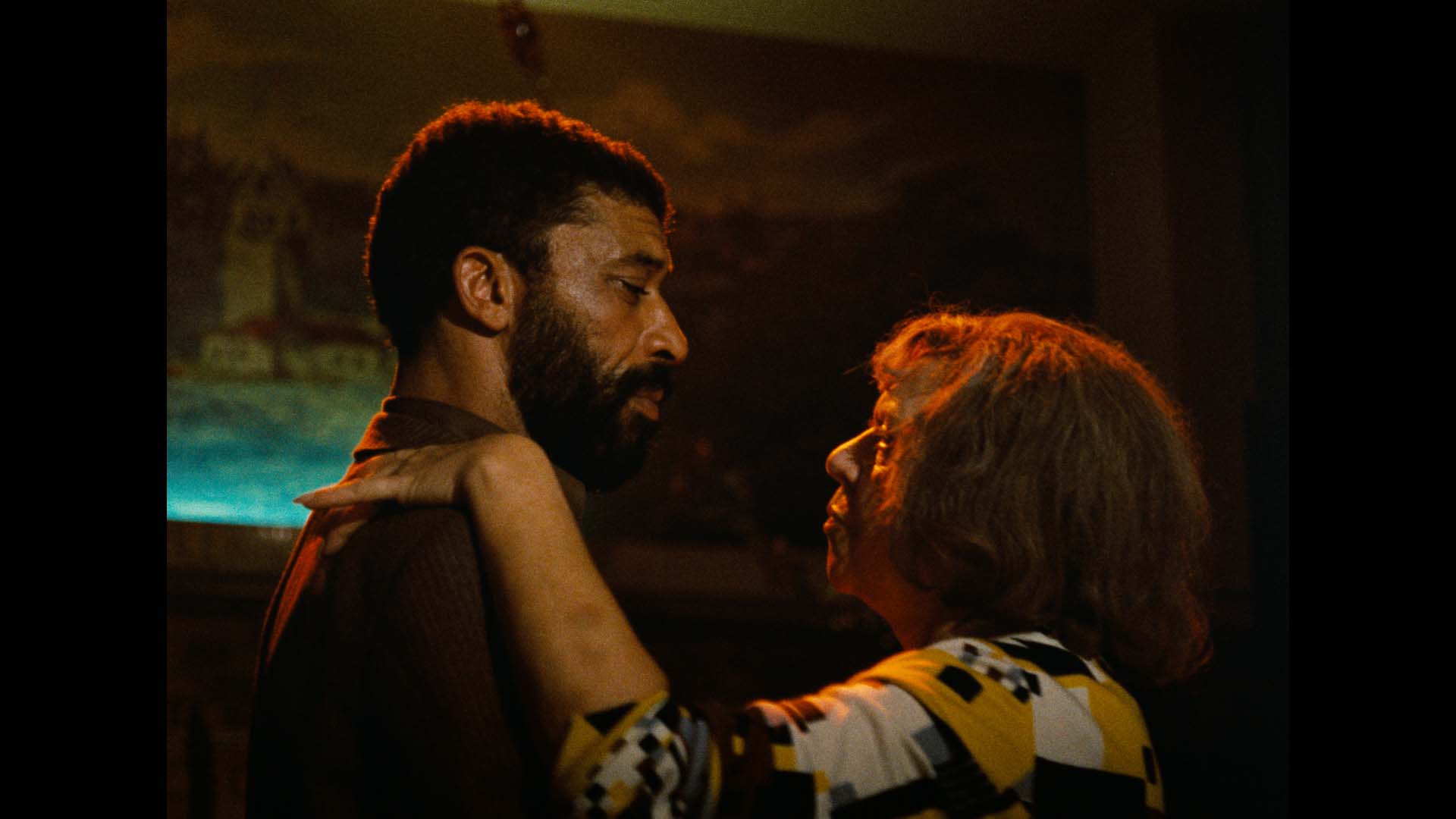
Another writer might highlight the critical significance of Berlin Alexanderplatz, or plug you into the Matrix stylings of World on a Wire, on a mission to underline both as key gateways into his TV work, but I’m actually going to shout about my favourite Fassbinder television project, which just so happens to be an Arrow title (they’re not making me do this, I promise).
Eight Hours Don’t Make A Day is a socialist wonder. So controversial when it aired (between 1972 - 1973), for its perceived passionate plea to factory workers to rise up and seize the means of production, only five of the eight planned episodes were ever aired.
Watching it now, its politics are a highlight - but what really stands out are the truly glorious characters. This is as close to purely hopeful as Fassbinder gets (perhaps because the project was never finished), and it’s a truly joyous experience to see so many of his regulars inhabiting a world in which love and friendship really do conquer all ills. An ultimate comfort watch (not a description often given to Fassbinder’s output), Eight Hours Don’t Make A Day will put a smile on every face that experiences it (except, possibly Boris Johnson’s).
And you’ll need a smile for the next section of this celebration - because we can’t discuss Fassbinder’s career without acknowledging more of the difficult stuff.
Controversy
There’s no denying it, Fassbinder was a complicated and tortured figure, who seemed to complicate and torture many of the people he encountered. Schygulla describes herself not as a Fassbinder collaborator, but as a ‘survivor.’
Hermann is another (literal) survivor, Fassbinder’s torment led her to a (thankfully unsuccessful) attempted suicide. Armin Meier wasn’t as lucky, and witnesses attest to Fassbinder’s brutal treatment of the actor in the lead-up to his death.
Fassbinder’s work is full of characters being punished for their optimism, whether that’s the titular Fox, from Fox and His Friends (played by Fassbinder) or the titular Effi Briest (played by Schygulla). Fassbinder seemed to have a fiercely cynical outlook that gave his work intense power, but also seemed to colour his interactions. But he also found beauty in pain.
“It isn't easy to accept that suffering can also be beautiful,” he said. It's difficult. It's something you can only understand if you dig deeply into yourself.”
Ultimately, as with so many tormentors - there seemed to be a self-hatred at the heart of Fassbinder’s actions. But there was a self-examination too, in the form of the art he left behind. If we want to understand people like him, it’s important that art survives.

Legacy
So let’s not end on a sour note. Yes, Rainer Werner Fassbinder has been described as a ‘demon’ by his collaborators ('You never knew if he was about to caress you or pounce on you with his claws,’ Hannah Schygulla said), but sometimes it takes an artist who’s wrestling with their shadow side to hold up a mirror to the monsters in the audience.
And make no mistake, these movies are mirrors - sometimes taking the cinema of cruelty to such extremes you could argue that filmmakers like Lars von Trier saw themselves reflected in their silver screen surfaces. Fassbinder’s Martha (1974), for example, feels like a lost Lars movie from the first frame to final credit.
If you’ve ever felt lonely, abused, or exploited, those emotions are projected in widescreen throughout Fassbinder’s work, sometimes in technicolour. This reputed monster has left behind sensitive art that cuts to the heart of what it means to be human.
And perhaps it’s telling that his legacy is being cared for by his former collaborator, and ex partner, his editor Juliane Lorenz, who painstakingly protects his work, through the Rainer Werner Fassbinder Foundation. “To this day, the foundation’s most important task is to preserve and nurture Rainer’s work,” Lorenz said.
“You can’t imagine how sensitive film materials and manuscripts are. For years, the RWFF has been making backup negatives and new copies of Fassbinder’s films. Some of the original reversal film and color negatives were so faded that they had to be completely reconstructed.”
“Sometimes I think Rainer is sitting up there and laughing about all the work he is making us do,” Lorenz said, “But this is work that is helping us to grow. It is also being rewarded by the happiness, thanks and recognition coming from Fassbinder’s many fans, and as a result Fassbinder and the deep humanity expressed in all his work lives on.”
Amen to that.

